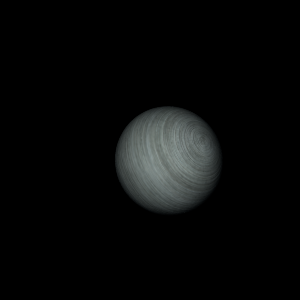|
|
Space Astro
|
Info for exoplanet "Forn Lia"
| Scientific (actual) data |
|---|
| Name | Kepler-76 b |
| Planet status | Confirmed |
| Planet mass | 2.01 |
| Radius | 1.36 |
| Orbital period | 1.54493 |
| Semi major axis | 0.0274 |
| Inclination | 77.55 |
| Discovered | 2013 |
| Updated | 2021-02-05 |
| Tconj | 2454970 |
| Tzero tr | 2454970 |
| Impact parameter | 0.9623 |
| K | 306 |
| Temperature (kelvin) | 2140 |
| Publication | Published in a refereed paper |
| Detection type | Other |
| Alternate names | 2MASS J19364610+3937084 b, K01658.01, KIC 4570949 b, KOI-1658 b, KOI-1658.01, WISE J193646.10+393708.3 b |
| Star name | Kepler-76 |
| Right ascension | 294.19° |
| Declination | 39.62° |
| Mag v | 14 |
| Mag j | 12.343 |
| Mag h | 12.134 |
| Star distance | 842.87 |
| Star metallicity | -0.1 |
| Star mass | 1.2 |
| Star radius | 1.32 |
| Star sp type | F |
| Star temperature | 6409 |
| Star alternate names | 2MASS J19364610+3937084, KIC 4570949, KOI-1658, WISE J193646.10+393708.3 |
| Wikipedia article | Kepler-76 b |
Back
| |
| Fictional info (?) |
|---|
| Suggested name | Forn Lia |
| Planet type | Large hot gas giant |
| Its orbital period around Kepler-76 of 1.5 earth days is the shortest of all the planets in its solar system.
As seen from Kepler-76, in a frame of reference that rotates with the orbital motion, it appears to rotate only once every two years.
The polar regions are constantly below 162°K (-111°C). |
| Atmosphere | Nitric oxide | 78% |
| Ozone | 20% |
| Methane | 1.7% |
| Atmospheric pressure | 0.0018 bar |
 |
| Moon | Maidphaë | Small round gaseous asteroid |
| Ophepero | Huge irregular rocky asteroid |
| Carnaq | Small round ice comet |
| Saxa | Huge irregular rocky asteroid |
| Kivi Hako Fer | Large irregular oceanic moon |
| Fareri | Large round gaseous asteroid |
| Corka | Very small slightly egg-shaped oceanic moon |
| Cune | Large round rocky moon |
| Meonear Iso | Medium-sized almost round crater-filled moon |
| Paame-deuces | Huge irregular crater-filled moon |
| Paldome-el | Large round rocky comet |
| Theael | Medium-sized slightly egg-shaped gaseous moon |
| Nylibauti | Very small potato shaped oceanic asteroid |
| Pina Cupina-chal | Huge slightly egg-shaped crater-filled moon |
| Proliaq Sycoiet | Huge almost round rocky moon |
| Lisaraum Kivi | Small round gaseous moon |
| Bosban-galaga | Large potato shaped rocky asteroid |
| Francal | Medium-sized slightly egg-shaped rocky asteroid |
| Tepansida Dra | Huge almost round gaseous asteroid |
| Mnedecha Cylle | Huge potato shaped oceanic moon |
| Mablind | Huge irregular oceanic moon |
| Naiad Mippa | Medium-sized round rocky asteroid |
| Nesoti | Small irregular oceanic comet |
| Google search for Forn lia |
|
Website by Joachim Michaelis
|
|
|
|